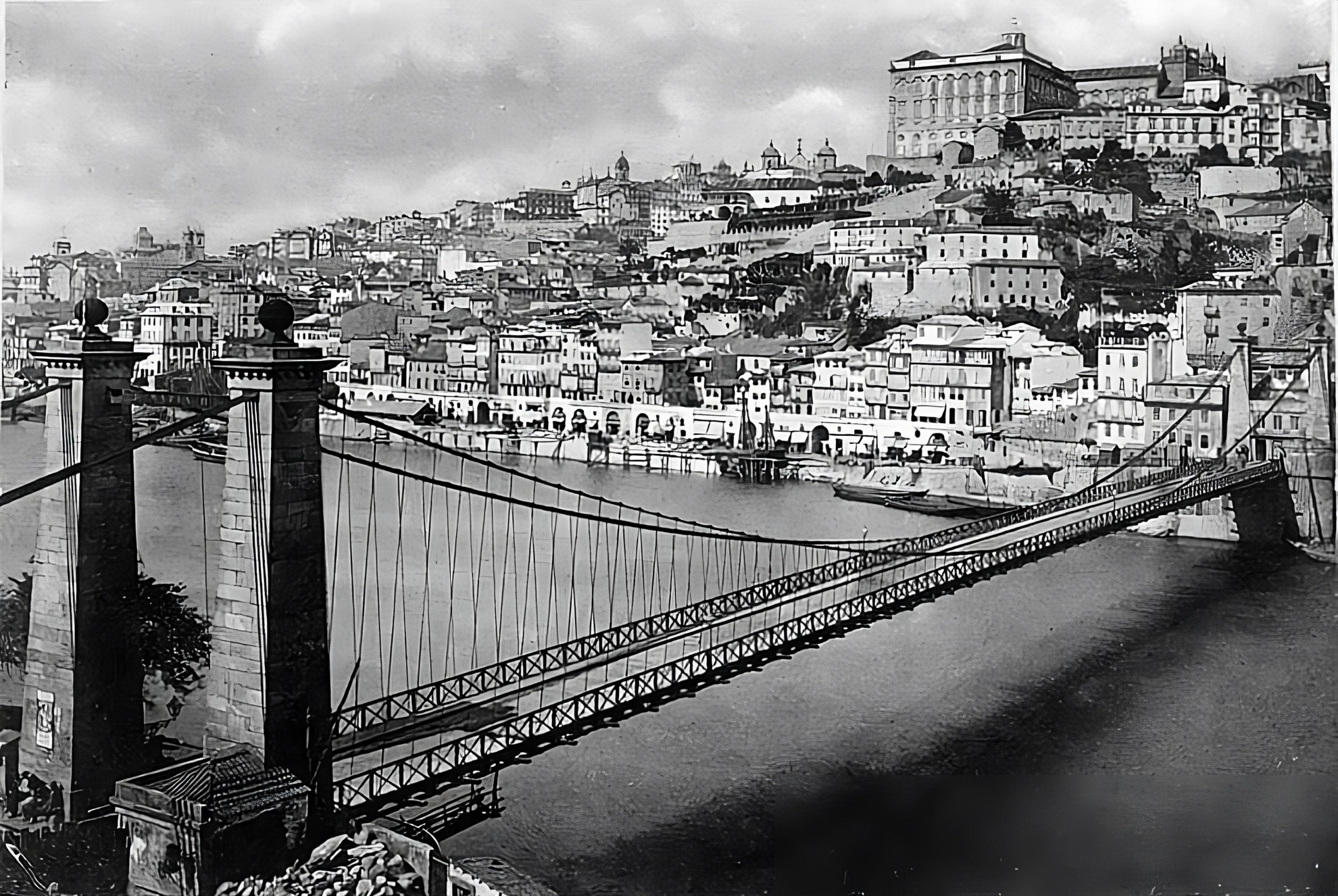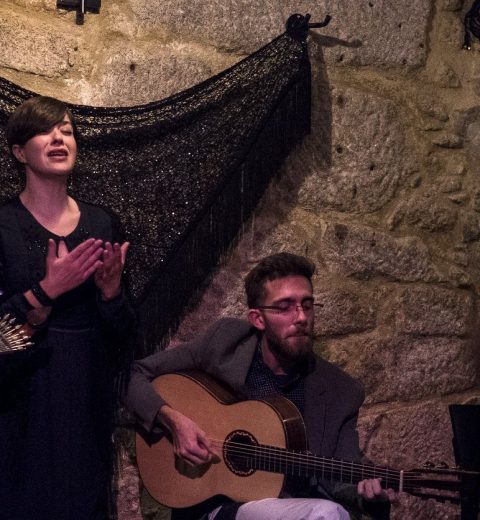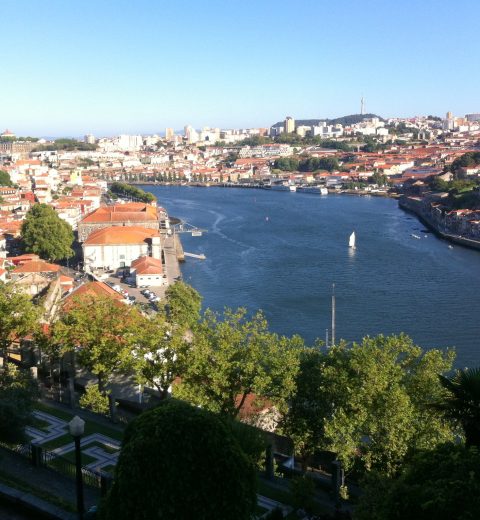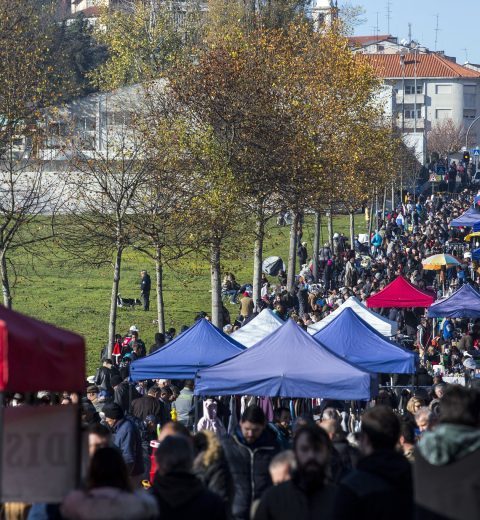The Bridges in Porto tell a fascinating saga of tragedies, elegance and centuries-old engineering. Although two of them, Ponte das Barcas and Ponte D. Maria II (Pênsil Bridge), no longer physically exist, their stories left indelible marks on the region’s historical narrative. Discover with us some of the intriguing details behind these iconic Porto Bridges.
- 1. Ponte das Barcas: One of the Porto Bridges with the Most Tragedy and Historic Transformation
- 2. D. Maria II Bridge: Centenary Elegance over the River Douro in Porto
- 3. Icon of Elegance and Resilience: The History of the Luís I Bridge in Porto
- 4. Maria Pia Bridge: Gustave Eiffel's Eternal Railway Legacy in Porto
- 5. Architectural Treasure and Avant-Garde Engineering: The History of the Arrábida Bridge in Porto
1. Ponte das Barcas: One of the Porto Bridges with the Most Tragedy and Historic Transformation
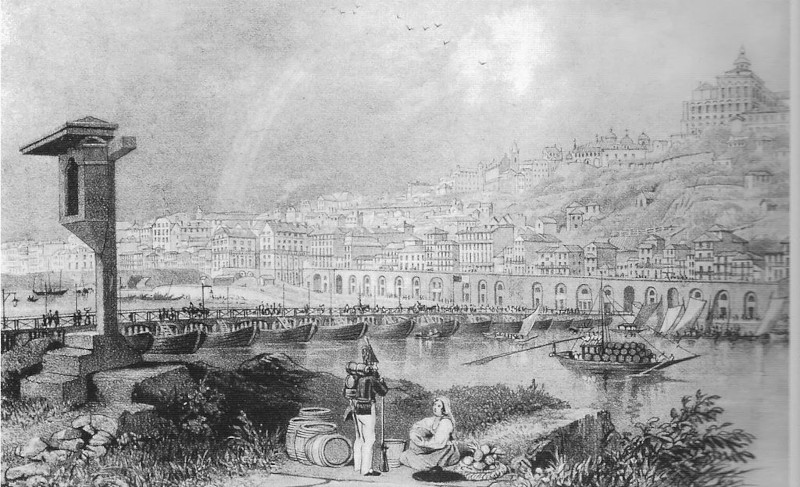

Our list of bridges in Porto has to start with the Ponte das Barcas, which has a rich and significant historical past and was a crucial element in the narrative of Porto and Portugal. Its history dates back to the early 19th century, when it was first built in 1806, and was a temporary solution to improve the crossing between the banks of the Douro River.
The Ponte das Barcas, made up of connected barges or small boats, was a floating structure that facilitated the passage of pedestrians and vehicles. Its notoriety was marked by a tragic event during the invasion by French troops in 1809. During this event, a crowd of people tried to cross the bridge simultaneously, resulting in the collapse of the structure and the loss of many lives.
After the disaster, the bridge was rebuilt, but its reputation remained tarnished by the tragic events. Later, in 1843, the D. Maria II Bridge, better known as the Hanging Bridge, was inaugurated to replace the Ponte das Barcas, providing a safer and more stable solution for crossing the River Douro.
2. D. Maria II Bridge: Centenary Elegance over the River Douro in Porto
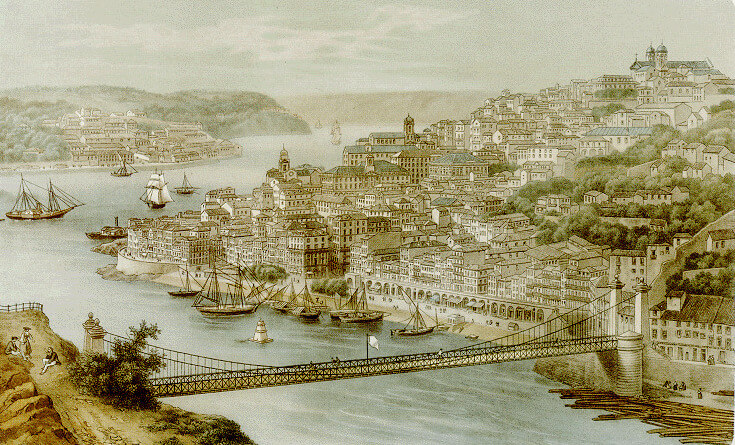

The D. Maria II Bridge, also known as the Pênsil Bridge (suspension bridge), was a remarkable structure that enriched the majestic landscape of Porto’s riverside area. Its history dates back to the 19th century, with construction beginning in 1841 and the inauguration in 1843, making it one of the region’s most iconic bridges.
Designed by the French engineer Stanislas Bigot, the D. Maria II Bridge was a masterpiece of 19th century engineering, standing out for its elegance and functionality. With its graceful metal arches and neoclassical towers, the bridge stands as a testament to the design and engineering of the time. In 1887, after the inauguration of the D. Luís Bridge, the suspension bridge was dismantled.
3. Icon of Elegance and Resilience: The History of the Luís I Bridge in Porto
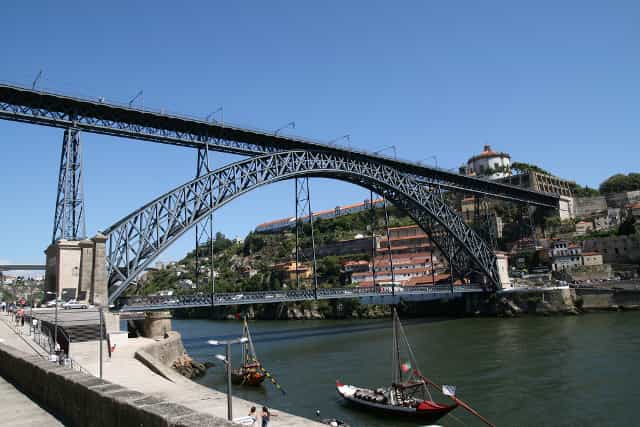

The Luís I Bridge, one of the most emblematic structures in the city of Porto, Portugal, has a rich history dating back to the 19th century. Its construction began in 1881 and was completed in 1886 under the supervision of Belgian engineer Théophile Seyrig, a disciple of the famous Gustave Eiffel. An interesting fact about the Louis I Bridge is its resistance and durability over time.
Despite being more than a century old, the bridge has maintained its vital function of connecting the banks of the River Douro, undergoing various adaptations over the years to meet growing urban demands. In addition to its functional importance, the Luís I Bridge is an iconic symbol of Porto, offering stunning panoramic views of the city and the Douro River.
4. Maria Pia Bridge: Gustave Eiffel’s Eternal Railway Legacy in Porto
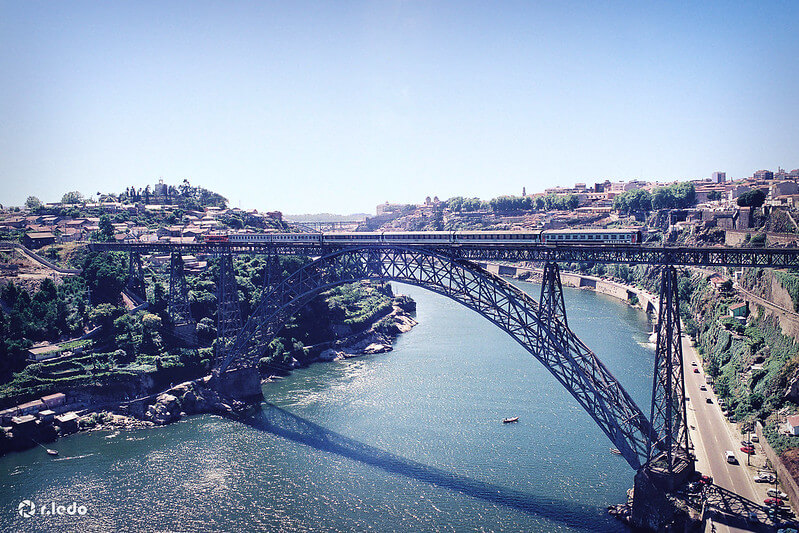

Construction of the Maria Pia Bridge began in 1876 and was completed in 1877. It was designed by the renowned engineer Gustave Eiffel, before the famous Eiffel Tower in Paris.
The Maria Pia Bridge was the first railway bridge to connect the banks of the River Douro in Porto. It played a crucial role in the development of the railway infrastructure in the region, facilitating the transport of passengers and goods between the north and south of Portugal.
The remarkable character of the Maria Pia Bridge lies not only in its pioneering function as a railway bridge, but also in its unique architectural beauty. The metal structure, with its arches and ornate details, stands out as a masterpiece of 19th century design, providing a visual testimony to Gustave Eiffel’s ingenuity.
Despite not being in use for its original function, the Maria Pia Bridge remains a historical symbol and a site of architectural interest, attracting admirers and onlookers looking to explore the rich railway and engineering heritage of the city of Porto, which is why it has to be on our list of Porto’s Bridges.
5. Architectural Treasure and Avant-Garde Engineering: The History of the Arrábida Bridge in Porto
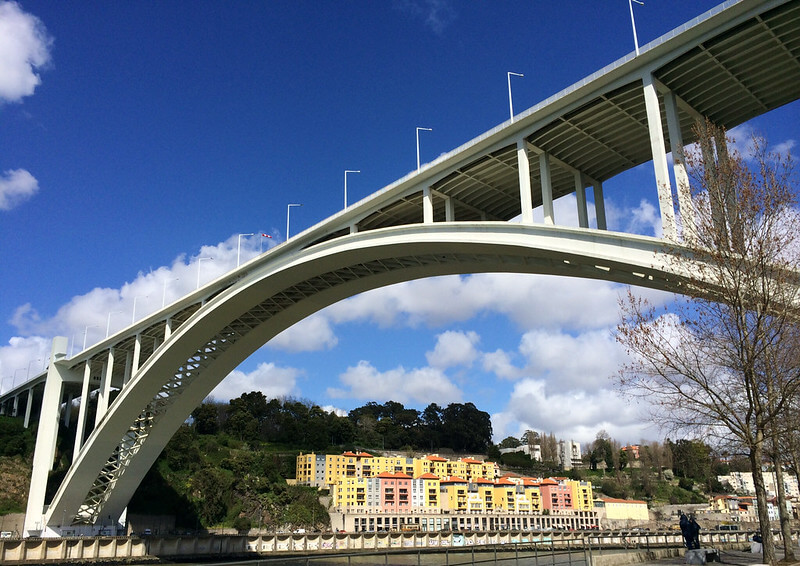

The Arrábida Bridge has a history dating back to the 20th century, with construction beginning in 1957 and completion in 1963. Designed by the renowned engineer Edgar Cardoso, this suspension bridge represents a true engineering masterpiece, marking a notable advance in bridge design at the time.
For many years, the Arrábida Bridge held the title of the bridge with the longest suspension span in the world, reaching an imposing 270 metres. This feature not only attests to the avant-garde vision of engineer Edgar Cardoso, but also emphasises the bridge’s importance as an architectural and technical landmark of global significance.



